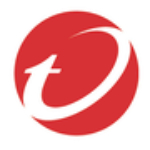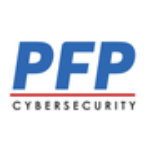List of Best IoT Security Software
Showing 10 of 20 productsMicrosoft Defender for IoT is a security solution for the Internet of Things. Safeguard your connected devices from cyber threats with advanced threat protection, real-time monitoring, and easy integration into existing systems. Count on Microsofts t...Read Microsoft Defender for IoT Reviews
AWS IoT Device Defender is a security tool designed to protect your IoT devices from potential threats, ensuring the safety and integrity of your data. With advanced features and robust capabilities, it provides reliable defense against unauthorized...Read AWS IoT Device Defender Reviews
nuPSYS is a software that offers an innovative is a solution for businesses of all sizes. With its advanced technologies and user-friendly interface, nuPSYS is designed to optimize operations and enhance performance. It provides a seamless platform f...Read nuPSYS Reviews
Electric Imp is a IoT platform that seamlessly connects the physical and digital worlds. With its powerful cloud-based infrastructure and robust hardware, Electric Imp empowers businesses to develop and deploy scalable, secure, is a solutions for a s...Read Electric Imp Reviews
Cisco Cyber Vision is a solution to secure and protect your industrial control systems. With its advanced threat detection and real-time monitoring capabilities, Cyber Vision ensures the safety and integrity of your critical assets. Stay ahead of cyb...Read Cisco Cyber Vision Reviews
Trend Micro Safe Lock is a reliable security software designed to protect your digital life. With its powerful features interface, it ensures the safety and privacy of your devices from cyber threats. So say goodbye to worries and welcome peace of mi...Read Trend Micro Safe Lock Reviews
Tempered is revolutionizing the way businesses handle their data with its powerful and user-friendly software. This innovative solution provides advanced security is a management of sensitive information, making it a game-changer in the tech industry...Read Tempered Reviews
CUJO AI is a security guardian for your connected home. With its advanced artificial intelligence, CUJO AI keeps a vigilant eye on all devices connected to your network, detecting and neutralizing cyber threats in real-time. Protect your digital worl...Read CUJO AI Reviews
PFP Cybersecurity is a solution to safeguard your digital world. With an aim to protect businesses and individuals from online threats, PFP offers top-notch cybersecurity services. From data breaches to malware attacks, PFP has you covered with its a...Read PFP Cybersecurity Reviews
Bastille is a solution for all your security needs. With its advanced technology and user-friendly interface, Bastille provides top-notch protection against cyber threats. Say goodbye to your worries and hello to a safe and secure digital experience...Read Bastille Reviews
- What Is IoT Security Software?
- Top Reasons Why Businesses Need IoT Security Software?
- What Are the Top Key Features of IoT Security Software?
- What Are the Top Benefits of IoT Security Software?
- What Are the Steps to Choose the Right IoT Security Software?
- What Are the Types of Iot Security Software for Different Industries?
- What Are the Technology Trends for Best IoT Security Software?
- What Are the Deployment Options for IoT Security Software?
What Is IoT Security Software?
IoT security software refers to a category of software specifically developed to safeguard devices, systems, and networks against malicious cyber-attacks. The interconnectivity of IoT devices, including Smart household appliances and industrial control systems, has been on the rise.
However, a significant concern arises from the inadequate security measures implemented in these devices. The purpose of IoT security software is to ensure the protection of devices and their corresponding systems against potential threats posed by hostile entities. The functionality of the best IoT security software varies based on its specific type.
Certain digital security solutions prioritize the provision of endpoint protection, which entails vigilant monitoring of potentially malevolent files or other origins for any signs of suspicious activity. Some individuals use a proactive approach by implementing measures to proactively mitigate potential risks and safeguard the entirety of the network.
Both products have the capability to safeguard IoT devices against potential security breaches. The utilization of IoT security tools extends to the monitoring and tracking of activities occurring on the devices and networks under its purview.
The capacity to track and monitor activities is of significant importance as it enables the detection and mitigation of any abnormal behavior that may indicate a potential security breach, hence minimizing the extent of any harm or damage.
In conclusion, the use of top IoT security software holds significant potential in safeguarding residential and commercial environments against malevolent entities.
Top Reasons Why Businesses Need IoT Security Software?
1. The implementation of effective cybersecurity measures serves to mitigate the risk of cyber threats, including malware and ransomware attacks, from compromising the integrity and security of a business's network infrastructure.
2. Mitigates the potential for illegal access to corporate data or systems.
3. One of the key benefits of this system is its ability to provide protection against Distributed Denial of Service (DDoS) assaults.
4. One of the key benefits of this security measure is its ability to effectively thwart reconnaissance activities and prevent unauthorized data exfiltration.
5. Improves the ability to defend against attack vectors that exploit the IoT security tools.
6. Improves the efficiency of threat detection and response by reducing the time required for identification and reaction.
7. One of the benefits of this technology is its ability to streamline and automate the process of regulatory compliance.
8. One of the benefits of protecting IoT networks is the reduction in complexity and operational costs.
9. This feature offers the ability to ascertain the presence of devices that are currently connected to a given network.
10. The proposed solution aims to streamline the various stages involved in deploying, monitoring, and updating Internet of Things (IoT) devices.
11. The provision of segmentation and encryption for Internet of Things (IoT) networks is available.
12. The utilization of this technology in industrial settings has been found to significantly improve the safety of personnel.
13. Addresses security threats associated with inadequately secured smart devices.
14. One of the key benefits of this technology is its ability to facilitate safe data transmission between endpoints.
15. The enhancement of reliability in best IoT security software.
What Are the Top Key Features of IoT Security Software?
1. Endpoint Hardware Protection: The purpose of IoT security software is to safeguard connected devices from potential compromises by offering endpoint hardware protection.
2. Network Isolation: The implementation of IoT security tools enables the segregation of network traffic, hence mitigating the potential vulnerabilities associated with data breaches and other security risks.
3. Identity and Access Management (IAM): The top IoT security software offers identity management and access controls to enforce authorized user access to IoT devices and systems.
4. Authentication and Authorization: IoT security solutions commonly incorporate authentication and authorization functionalities to enforce access restrictions only for authenticated users within the network.
5. Intrusion Detection and Prevention: Several Internet of Things (IoT) security solutions encompass the utilization of Intrusion Detection and Prevention (IDP) technology, which serves the purpose of promptly identifying and halting malevolent actions.
6. Data Protection: The best IoT security software encompasses a range of measures aimed at safeguarding data. These measures include the implementation of encryption protocols, data integrity checks, and data masking techniques.
7. Monitoring: The implementation of an Internet of Things (IoT) solution has the potential to facilitate the monitoring of device activity and provide timely alerts in the event of any suspicious occurrences.
8. Device Management: Certain Internet of Things (IoT) systems incorporate a device management capability that enables the management and control of interconnected devices.
9. Real-time Alerts: Internet of Things (IoT) security solutions have the capability to promptly notify administrators of any security incidents as they occur.
What Are the Top Benefits of IoT Security Software?
The top benefits of IoT security software are:
1. Improved system monitoring: The utilization of IoT security tools provides an augmented level of perceptibility across the entirety of the system, hence facilitating the prompt detection of dubious actions and malevolent conduct.
2. Reduced risk of data breaches: The best IoT security software offers enhanced cybersecurity measures, thereby enabling enterprises and organizations to safely exchange and store data, owing to its robust technological framework.
3. Automation of security processes: IoT devices have the capability to efficiently and effortlessly carry out automated security operations, such as patch management, logging, and authentication. This functionality serves to alleviate the workload on IT personnel.
4. Enhanced user experience: The utilization of top IoT security software facilitates enhanced regulation of data transactions, enabling users to safely retrieve data and access applications on their interconnected devices.
5. Lower operational costs: The topic of discussion pertains to security solutions for the Internet of Things (IoT). The implementation of measures to minimize manual work and streamline security issue resolution can lead to a decrease in operational costs.
6. Increased scalability: The utilization of Internet of Things (IoT) technology in security systems offers a range of benefits, including enhanced scalability and flexibility, which are crucial for organizations and businesses to effectively address their expanding security requirements.
7. Improved compliance: The utilization of Internet of Things (IoT) technology in security systems offers a range of benefits, including enhanced scalability and flexibility, which are crucial for organizations and businesses to effectively address their expanding security requirements.
What Are the Steps to Choose the Right IoT Security Software?
1) The identification of security requirements particular to the Internet of Things (IoT) network should be conducted by the business requirements. This includes evaluating the scale of the network, the various types of networks and device utilization, the required levels of security, and any other pertinent considerations.
2) Conduct a comprehensive investigation into various categories of Internet of Things (IoT) security software, afterward refining the selection of potential alternatives based on individualized requirements and the array of functionalities they provide.
3) Conduct a thorough evaluation of the IoT security tools vendors to ascertain their credibility, established history of success, positive client evaluations, and ability to deliver dependable customer service.
4) Conduct a comparative analysis of the features and pricing structures of different IoT security software products.
5) It is imperative to ensure the software can be swiftly and safely installed and made operational to mitigate any potential disruptions to current activities.
6) Select the product that optimally aligns with your distinct security needs and financial constraints.
7) It is vital to ascertain that the product possesses the capability to seamlessly integrate and sustain itself with low exertion, taking into consideration the prevailing hardware and system setups.
8) Before deployment, it is important to conduct software testing to evaluate its usability and verify the proper functioning of its features.
9) Following the successful implementation of the system, it is imperative to continuously monitor the system for potential security breaches or dangers that may manifest.
What Are the Types of Iot Security Software for Different Industries?
IoT security software for different industries includes the following types:
1. Application Security: This particular software is specifically engineered to provide security measures for the apps utilized within the Internet of Things (IoT) architecture. These applications encompass the software operating on various devices as well as cloud computing platforms.
One of the primary functions of this program is to provide protection against malicious software, unauthorized alterations, and data breaches.
2. Network Security: This particular software has the capability to implement a firewall mechanism and encryption protocols in order to safeguard the transmission and communication of data within the Internet of Things (IoT) system.
The implementation of this security measure can effectively safeguard the entire system against unauthorized access and malicious software, while also facilitating the detection of intrusions.
3. Endpoint Security: This particular software is specifically developed to provide security measures for the individual endpoints or devices within the Internet of Things (IoT) system, whether it be in a consumer or industrial setting.
One of the primary functions of device protection is to safeguard against potential threats posed by hostile actors, malware, unauthorized modifications, or the presence of harmful code.
4. Data Security: This particular program has the capability to safeguard the data contained within an Internet of Things (IoT) system, while also offering access control and authentication mechanisms to ensure that only individuals with proper authorization may retrieve the data.
Additionally, it has the capability to offer rudimentary encryption for data that is stored in cloud-based environments.
5. Identity Management: This particular program is specifically engineered to provide the security of authentication, authorisation, and access control in relation to the Internet of Things (IoT) system. The implementation of access controls serves the purpose of ensuring that exclusively authorized individuals possess the ability to access the system.
Additionally, these controls function to safeguard the integrity and confidentiality of the data and communications transmitted within the system.
What Are the Technology Trends for Best IoT Security Software?
The following discourse highlights the five most significant technological advances about the optimal security software for the Internet of Things (IoT).
1. Secure Network Connections: The security software for the Internet of Things (IoT) should offer network connections that are both safe and dependable, encompassing the functionalities of authentication, authorization, and encryption/decryption of data throughout its transmission.
The significance of this matter is particularly pronounced in the context of smart home and industrial applications, given the networked structure of the industry, which can potentially offer numerous avenues for the infiltration of hostile threats.
2. Hardware-Level Protection: The ideal best IoT security software should offer robust hardware-level safeguards, enabling the detection and prevention of malevolent assaults through continuous system monitoring. This entails vigilant scrutiny for indications of potential kernel exploits or anomalous traffic patterns, thereby ensuring comprehensive protection.
The implementation of hardware-level protection enables the security software to continue functioning in the event of a network disconnection, hence mitigating the potential vulnerability to attacks.
3. Automated System Updates: Security software must possess the capability of automatically updating its security protocols and patches to ensure that the software is consistently current with the most recent advancements and optimal practices in security. This measure guarantees optimal safeguarding against contemporary hazards.
4. Secure Access Control: In order to enhance the security of IoT devices and systems, the security software must offer robust access control mechanisms to guarantee that only those with proper authorization may get entry to safeguarded resources.
In addition, the system must offer comprehensive authorization through the implementation of multi-factor authentication. Furthermore, user-specific rights management should be incorporated to effectively mitigate the risk of data leakage.
5. Security Analytics: Ultimately, an optimal IoT security software solution should possess the capability to thoroughly examine and offer valuable observations regarding security logging and occurrences, with the aim of detecting prospective risks in advance, hence mitigating the likelihood of consequential issues arising.
Furthermore, the system should possess the capability to generate real-time warnings in order to promptly notify relevant stakeholders about any security-related matters that demand immediate attention.
What Are the Deployment Options for IoT Security Software?
IoT security software deployment options include:
1. On-Premise Solutions: The software is deployed and administered on-site at an organization's premises.
2. Cloud Solutions: The software's hosting location can be either on the organization's private cloud infrastructure or on a cloud infrastructure provided by a third-party cloud service provider.
3. Device-Specific Solutions: The installation and management of software on various types of Edge devices are of interest.
4. Hybrid Solutions: The management of software across various deployment types is a crucial aspect to consider.










